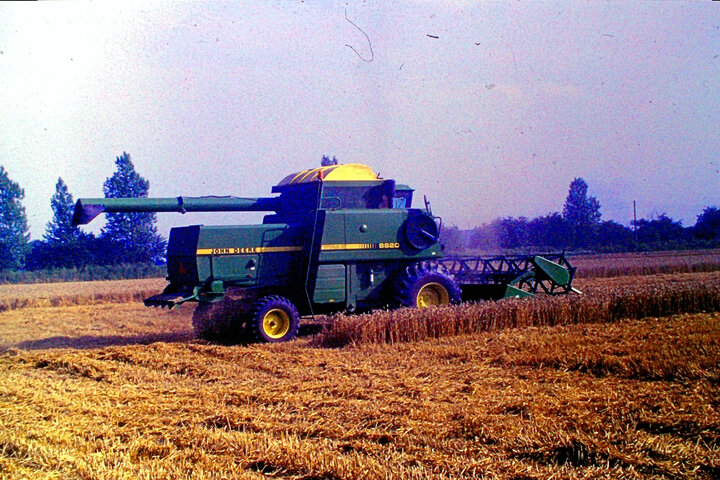(quoted from post at 02:46:31 11/29/23)
<img src=https://www.yesterdaystractors.com/cvphotos/cvphoto167658.jpg>
John Deere Titan 2 combine harvester. One of my customers bought one of only about six that came into the country. He made a big thing about his new combine locally, about how modern it was, how many acres he was going to cut in a day and how much he spent on it. Then he put it into the field!!!
We all laughed at the results and told him it was John Deere's answer to a total farm system, it cut and threshed the crop and replanted it out the back all in one operation. It just did not work in our conditions of long, damp straw and heavy crops.
The dealer took it back and sent it back to the States along with the others that had come over. John Deere learnt a lesson that others have learnt before, different farming methods do not always transfer successfully to other countries.
John Deere Titan 2
I have bought an 8820 and I am in west of France, very similar or worse conditions than UK. I also have an MF860. "Rough crops" is usually between 8 and 11ton / ha. (That is 170Bu/ac)
To make it simple, the 860 works really well, while the 8820 was bad.
The makor thing is that the MF has the high inertia cylinder, the front beater with a better feeding, and most importantly, a wheat only concave.
I took out the 8820 concave, welded 2 extra bars between the first 3 bars on the concave, and now, she is in business.
Before it was completelty impossible to tresh triticale.
A Claas from the same time is solely made for wheat, it is for instance possible to engage deawner plates from the outside of the combine in about 15s, on the old Senator, Mercator, etc.... in the 60s.... Now, I prefer to run the old Deere or MF because it looks cooler, but for sure a good Claas 118 or a good TF46 (fitted with Australian concave) is twice the combine of an 8820 in tough wheat.
Edit: In France, many 8820s were sold, because they were good combines in corn, and corn is more important. Many is a big word, but they were there. Maybe between 50 and 100. I have seen personally 7 of them. Most of them were fitted with an aftermarket "thisthle screen" with very long steel fingers made by moulet. It improved chaff distribution on the sieve.
The 8820 would have performed better if it had the same front stratification pan as an MF860, and a cleaning fan with an air inlet in the middle (like the Massey or other European combines of the same time.)
This post was edited by fdt860 on 12/01/2023 at 03:07 pm.


